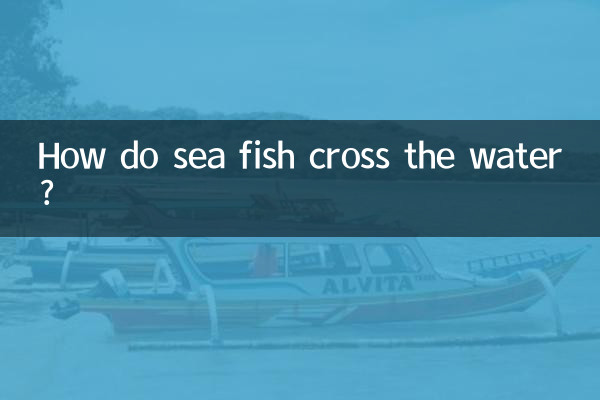How do sea fish cross the water?
In the process of raising seawater fish, "water crossing" is a crucial link, which directly affects the survival rate and health status of the fish. This article will combine the hot topics and hot content on the Internet in the past 10 days to provide you with a detailed analysis of the correct method for saltwater fish to cross the water, and provide structured data for reference.
1. What is saltwater fish crossing water?

Overwatering refers to the process of gradually adapting newly purchased saltwater fish to the new water environment. Since the water quality in the transport bag is different from that in the fish tank, including parameters such as temperature, salinity, pH value, etc., the transition needs to be slow.
| parameter | Transport bag water quality | Fish tank water quality | Adaptation range |
|---|---|---|---|
| temperature | May be on the low side | 25-28℃ | ±1℃/hour |
| salinity | 1.020-1.025 | 1.023-1.026 | ±0.001/hour |
| pH value | 7.8-8.2 | 8.0-8.4 | ±0.2/hour |
2. Specific steps for passing water
Based on recent hot discussions on aquarium forums, we have compiled the most recognized methods of passing water:
1.temperature adaptation: Float the sealed transport bag on the water surface of the fish tank for 30-60 minutes, so that the water temperature in the bag gradually becomes consistent with the fish tank.
2.mix gradually: Add about 10% of the fish tank water to the bag every 15 minutes for 2-3 hours.
| time | operate | Things to note |
|---|---|---|
| 0-30 minutes | Floats to adapt to temperature | don't open the bag |
| 30-150 minutes | Gradually add fish tank water | The amount added each time should not exceed 10% of the water content in the bag |
| 150 minutes later | Using fishing nets to move fish | Avoid pouring transport water into the master tank |
3. Handling of special situations
Based on recent popular discussions, we have summarized solutions to several common problems:
1.fish transported long distance: If the transportation time exceeds 24 hours, it is recommended to perform a short period of pure oxygen recovery (1 hour) before starting to pass through the water.
2.Sensitive breeds: For clown fish, butterfly fish, etc., the water crossing time should be extended to 4-6 hours.
3.Stress reaction occurs: If the fish body turns white and is breathing rapidly, stop crossing the water immediately and keep the environment dark and quiet.
4. Precautions after passing water
According to sharing from breeding experts in the past 10 days, you need to pay attention to the following after completing the water crossing:
| time | Things to note | Recommended Action |
|---|---|---|
| first day | Don't feed | Turn off bright light |
| Day 2-3 | Feed small amounts | Observe eating status |
| within a week | Observe closely | Check for white spot disease, etc. |
5. Common errors and corrections
Based on recent hot discussions in the aquarium community, we have compiled a list of common mistakes made by novices:
1.Insufficient water passing time: At least 2 hours recommended, longer for sensitive varieties.
2.Pour directly into the fish tank: The transport water may contain harmful substances, so fish should be transferred using fishing nets.
3.Ignore water quality testing: Before passing the water, the NH3, NO2 and other indicators of the fish tank should be tested to ensure the safety of the water quality.
6. Expert advice
Based on the recent views of many mariculture experts:
1. Use professional water passing equipment, such as drip water filter, to control the mixing speed more accurately.
2. For high-value fish, it is recommended to set up a separate quarantine tank for water passing and observation.
3. Record the detailed parameters of each water crossing and establish your own database to help improve the success rate.
Through the water passing method of the above system, the survival rate of newly purchased seawater fish can be greatly improved. Remember, patience is key and it is better to be slow to adapt than to rush and lose money. Hopefully this article will help you take better care of your saltwater fish.

check the details

check the details